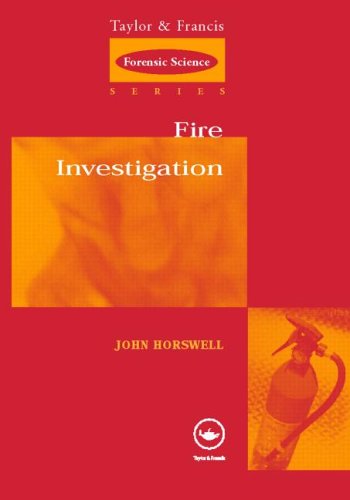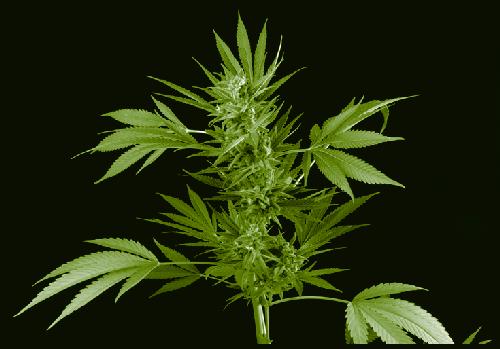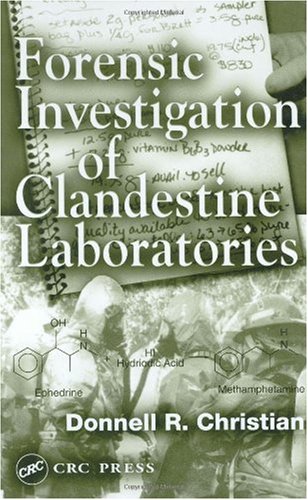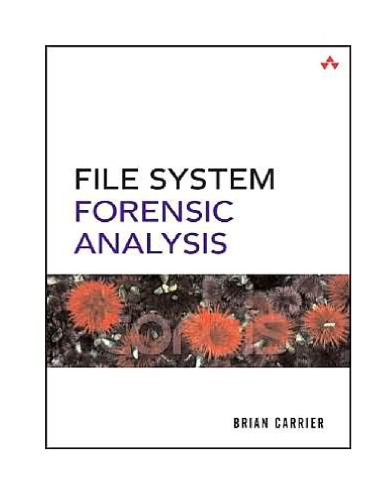Niamh Nic Daeid0415248914, 9780415248914
Table of contents :
Fire Investigation……Page 1
Back Cover
……Page 2
Copyright Info……Page 4
Table of Contents……Page 5
Contributors……Page 8
Preface……Page 9
Laboratory analysis……Page 10
Fire and combustion……Page 11
Flammability (explosive) limits/range……Page 12
Fire point/Flame point……Page 13
Thermal inertia……Page 14
Heat transfer [1]……Page 15
Combustion [1,2]……Page 16
Development and behaviour of fires in compartments……Page 17
Flashover……Page 18
Post-flashover (steady state burning)……Page 19
Factors affecting fire growth……Page 20
References……Page 21
Introduction……Page 22
Combustible materials……Page 23
Wood……Page 24
Animal products……Page 25
Fossil hydrocarbons……Page 26
Flaming ignition……Page 27
Liquids……Page 28
Plastics……Page 29
Smouldering……Page 30
Smokers materials……Page 32
Matches……Page 35
Solid fuel……Page 37
Candles……Page 40
Hot work……Page 41
Mechanical failure……Page 46
Overheating of electrical installations……Page 50
Spontaneous combustion……Page 53
Hazardous environments……Page 65
References……Page 68
Introduction……Page 70
IEE Wiring Regulations……Page 71
The distribution system……Page 72
Domestic single-phase supplies……Page 73
Three-phase supplies……Page 75
Cable construction……Page 76
Fixed installation cables……Page 77
Flexes and extension leads……Page 78
Fuse technology……Page 79
Current ratings……Page 81
Discrimination……Page 82
Miniature circuit breakers……Page 83
Residual current devices……Page 84
Arc fault protection……Page 86
Short circuit……Page 87
Overloading and overfusing……Page 88
In-line arcing……Page 90
Airing cupboard fires……Page 91
Electric blanket fires……Page 92
Faults in electricity intakes……Page 93
High resistance faults and stray currents……Page 94
Neutral–Earth faults……Page 95
Electrical sparks and arcs……Page 96
Loss of Neutral link……Page 97
Misuse of electrical appliances……Page 98
Tracking in burning wood/tracking through char……Page 100
Ensuring electrical safety……Page 101
Test equipment and its use……Page 102
Testing of cables or appliances……Page 103
Electrical items……Page 104
Signs of electrical activity in burnt conductors……Page 106
Signs of overload in cables……Page 107
Laboratory examination of fuses……Page 109
Laboratory examination of switches……Page 111
Acknowledgements……Page 112
References……Page 113
Introduction……Page 114
Why carry out a reconstruction?……Page 115
Issues that can be addressed by a reconstruction……Page 116
Types of test or reconstruction……Page 117
Primary issues……Page 118
Type……Page 119
Location……Page 120
Assumptions……Page 121
Detailed design……Page 122
Heat flux……Page 123
Gas composition (and toxicity)……Page 124
Factors……Page 125
Safety……Page 126
Schedule……Page 127
Reporting……Page 128
Costs……Page 129
Dumfries House Fire, February 1995……Page 130
Fire growth and spread……Page 131
CFD modelling……Page 132
Method……Page 133
Models used……Page 134
Selection of the appropriate model……Page 135
Validity……Page 136
Learning lessons from fires……Page 137
Conclusion……Page 139
References……Page 140
Reaction to fire……Page 141
Appendix B: About FRS……Page 142
Appendix C: Fire test laboratories……Page 144
Introduction……Page 145
Ignitable liquids……Page 146
Headspace techniques……Page 147
Simple headspace extraction……Page 149
Adsorbent properties……Page 150
System properties……Page 152
Passive activated charcoal adsorption……Page 153
Dynamic activated charcoal adsorption……Page 155
Tenax adsorption……Page 157
Solid phase micro extraction……Page 158
Conclusion……Page 159
References……Page 160
Introduction……Page 162
Hydrocarbon chemistry……Page 163
Petroleum-based ignitable liquids……Page 165
Nonpetroleum ignitable liquids……Page 166
Analytical process……Page 167
Gas chromatography……Page 168
Mass spectrometry……Page 170
Gasoline……Page 177
Petroleum distillates……Page 178
Isoparaffinic products……Page 181
Naphthenic–isoparaffinic products……Page 182
Aromatic solvents……Page 183
Normal alkane products……Page 184
Oxygenated solvents……Page 185
Natural extracts……Page 186
Matrix contributions……Page 188
Polyethylene plastics……Page 189
Carpet and carpet pad……Page 190
Asphalt shingles……Page 191
Incidental ignitable liquids……Page 193
Finished Woods……Page 194
Conclusion……Page 195
References……Page 196
Question about identification of ILR……Page 198
Misconception about ‘pyrolysis products’……Page 199
Ignition phase……Page 200
Extended fire phase……Page 201
Substrate background products……Page 202
Contamination……Page 203
Random scission……Page 204
Monomer reversion……Page 205
Combustion products……Page 206
Knowledge of polymers and interfering products……Page 207
Polyvinylchloride (PVC)……Page 210
Polymethylmethacrylate (PMMA)……Page 211
Polycarbonates……Page 212
Polyacrylonitrile (PAN)……Page 213
Prediction of substrate background products……Page 214
Polyester carpet……Page 215
Wood……Page 216
Practical examples of interpretation of chromatograms and identification of sources of interferences……Page 218
Case 1……Page 219
Case 2……Page 220
Case 3……Page 222
Case 4……Page 226
Case 5……Page 227
Acknowledgements……Page 231
References……Page 232
Colour Plates……Page 234







Reviews
There are no reviews yet.